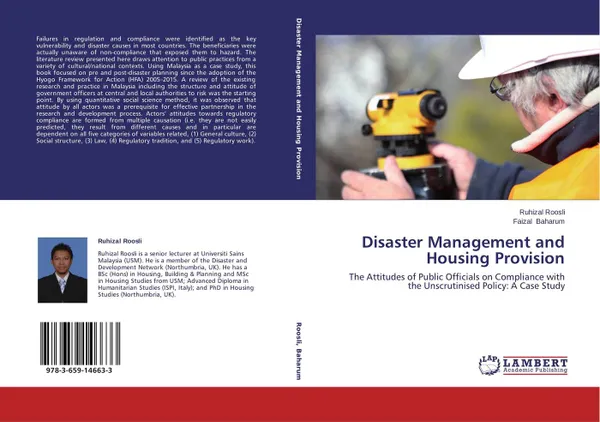Disaster Management and Housing Provision
2014
284 страницы
Категория: Литература на иностранных языках
Язык: Английский
Тираж: 500
📓 Failures in regulation and compliance were identified as the key vulnerability and disaster causes in most countries. The beneficiaries were actually unaware of non-compliance that exposed them to hazard. The literature review presented here draws attention to public practices from a variety of cultural/national contexts. Using Malaysia as a case study, this book focused on pre and post-disaster planning since the adoption of the Hyogo Framework for Action (HFA) 2005-2015. A review of the existing research and practice in Malaysia including the structure and attitude of government officers at central and local authorities to risk was the starting point. By using quantitative social science method, it was observed that attitude by all actors was a prerequisite for effective partnership in the research and development process. Actors’ attitudes towards regulatory compliance are formed from multiple causation (i.e. they are not easily predicted, they result from different causes and in particular are dependent on all five categories of variables related, (1) General culture, (2) Social structure, (3) Law, (4) Regulatory tradition, and (5) Regulatory work).
Мнения
